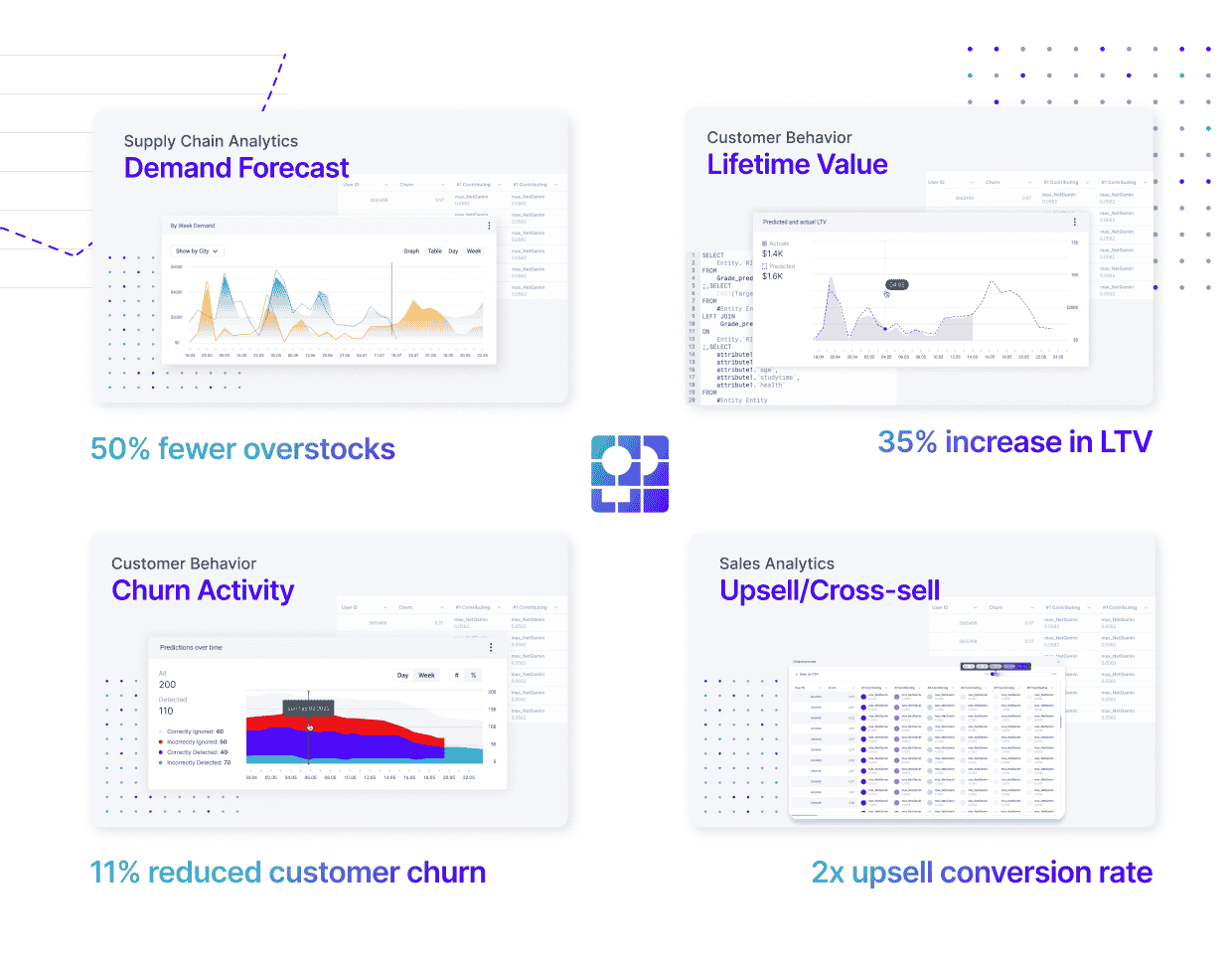Many of us started making data visualizations in elementary school. Maybe you organized colorful candies into a “bar chart” or drew a line graph based on a classroom science experiment.
By now, you’re undoubtedly using a much more sophisticated approach to exploring and reporting out on your business’s data. You’re probably going beyond visualization, maybe creating shared dashboards of key information. Perhaps you’ve moved past spreadsheets to more advanced analytics tools.
Those steps are good progress toward identifying insights. However, you may still be missing out on the potential of your data that predictive analytics and data science could unlock.
It’s easy to dismiss predictive analytics as too complex and intimidating, as “too much” for your business at its current size, or too expensive to adopt. But these three reasons don’t hold up in today’s data science world. Moreover, while BI tools can help you find great insights into what’s happening right now, your business needs to know what’s coming down the road. Moving from BI to AI can help you position your business perfectly for that future.
Let’s take a look at these reasons and see how adding predictive analytics to your existing data toolkit could transform your business.
It Doesn’t Have to be Scary
If you think of “data science” and “AI” as if they always involve building autonomous robots or computers that can operate spaceships … well, yes, those projects could require hardcore expertise and teams of specialists. But many data science tasks in business, like predicting customer churn or identifying VIP customers, can be accessible to all professionals.
Doing data science in your business no longer requires a group of specialized data scientists who understand complex math and write hundreds of lines of custom code. Instead, anyone familiar with your data — BI specialists, data analysts, and others — can dive into predictive analytics to grow your business.
There’s sometimes a fear that “doing data science wrong” could lead to disaster. Sure, in general, it’s possible to make mistakes in predictive analytics projects. But mistakes happen with less sophisticated tools, too. Humans make data entry errors, miscalculate sums, write incorrect formulas in spreadsheets — and so on. Today’s predictive analytics software helps identify issues in data and guides the model building process. Now, these modern platforms can even monitor models over time to ensure they’re still functioning as expected. Human error is always a possibility, but the risk is smaller than you might fear.
Predictive analytics are becoming a viable science for business teams, centered around key business use cases
You’re Ready to Move from BI to AI, No Matter Your Business Size
If you’re operating anything larger than a lemonade stand, your business can benefit from adopting data science. (And even the lemonade stand could see a boost!)
To be sure, it might seem like routine business software should suffice if you don’t often deal with millions of rows of data. However, even smaller datasets can contain a wealth of knowledge. Predictive analytics certainly doesn’t require enormous quantities of data. You can start right where you are, today. It won’t take long to see rewards from moving from BI to AI. Focus resources on projects that can take your business to the next level. At the same time, you’ll be building a data program for that growth.
What’s more, your existing datasets don’t have to stand alone. It’s important to realize that supplementing your data with external datasets — such as traffic or weather information — can generate more accurate predictions. Without a doubt, it’s even better if you select a predictive analytics platform that provides data enrichment for you.
Make Data Science Everyone’s Business
Another key point is that data scientists are well compensated, reflecting their deep knowledge and in-demand skills. However, not every business has the resources for a full data science team or even a single data scientist. In that case, platforms making these capabilities widely available still offer the power of predictive analytics.
And even if you have or plan to add dedicated data scientists on your team, consider the best way to use their time and talents. In fact, data scientists are often distracted from high-ROI projects by ad-hoc requests for reports or simple models. Instead, reserve their time for complex business questions, and adopt predictive analytics self-service tools for the routine questions.
Additionally, consider how a data science mindset can suffuse your business if predictive analytics is part of everyone’s capabilities, not relegated to specialized projects. A recent article from McKinsey emphasized that the next great competitive advantage in technology “requires company leaders to agree that the purpose of AI is to fundamentally transform the way the business conducts its day-to-day operations.”
In short, achieving that collective mindset requires moving from BI to AI. Consequently, everyone in the business should have the chance to make an impact with predictive analytics.
Make it standard practice, not a special occasion, to apply data science to your business’s questions. Then, enjoy the rewards of taking that next step.
If you want to assess your predictive readiness, request a use case consultation and we can help point you on the right path.





